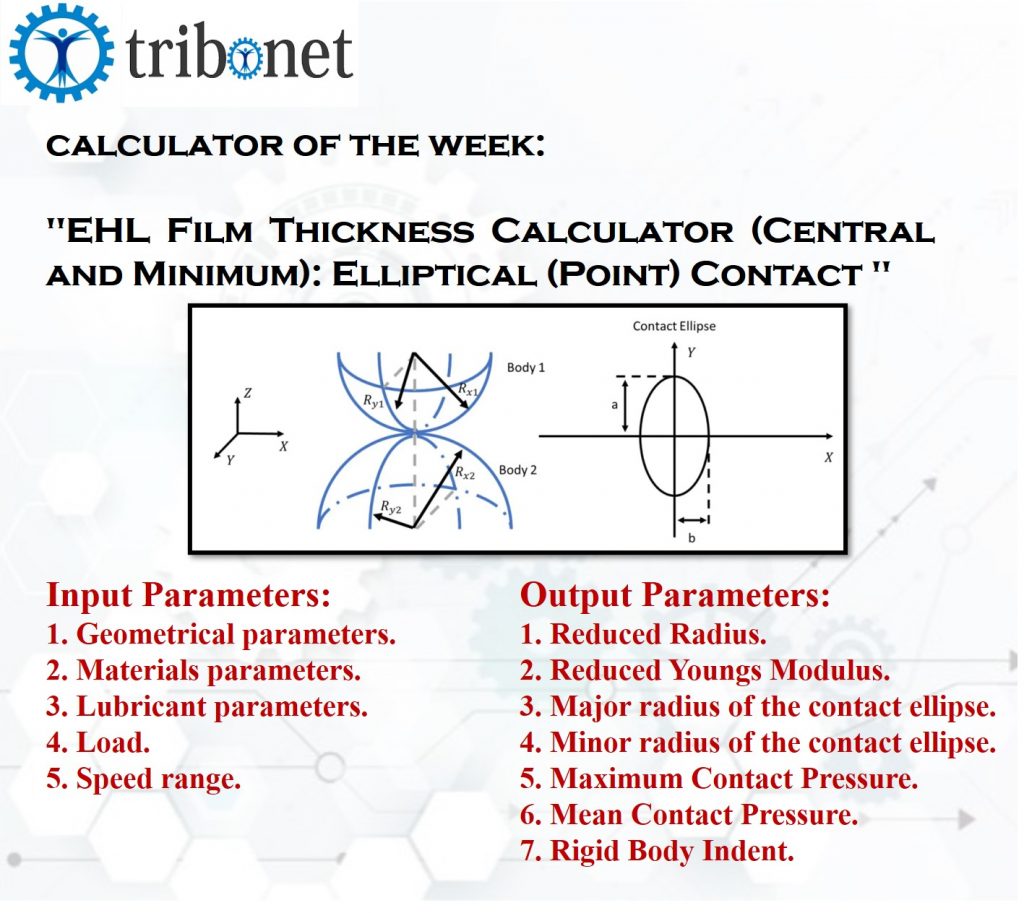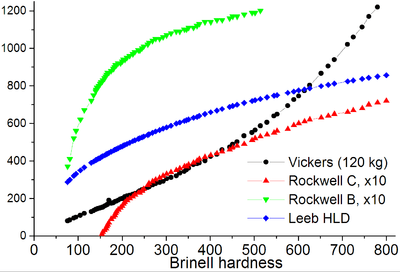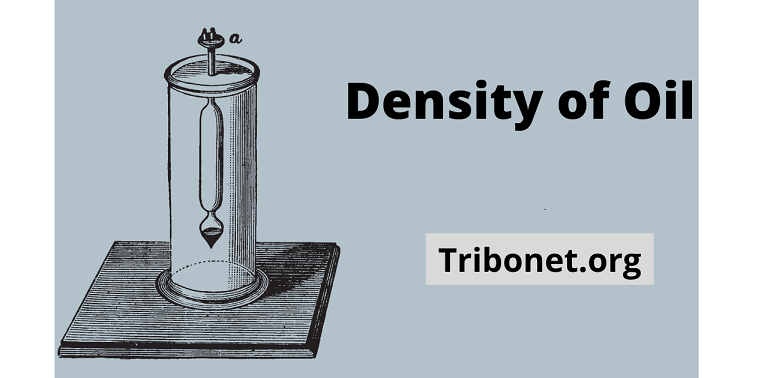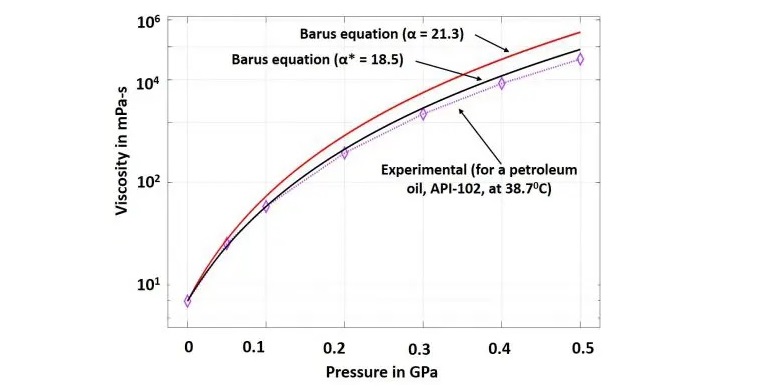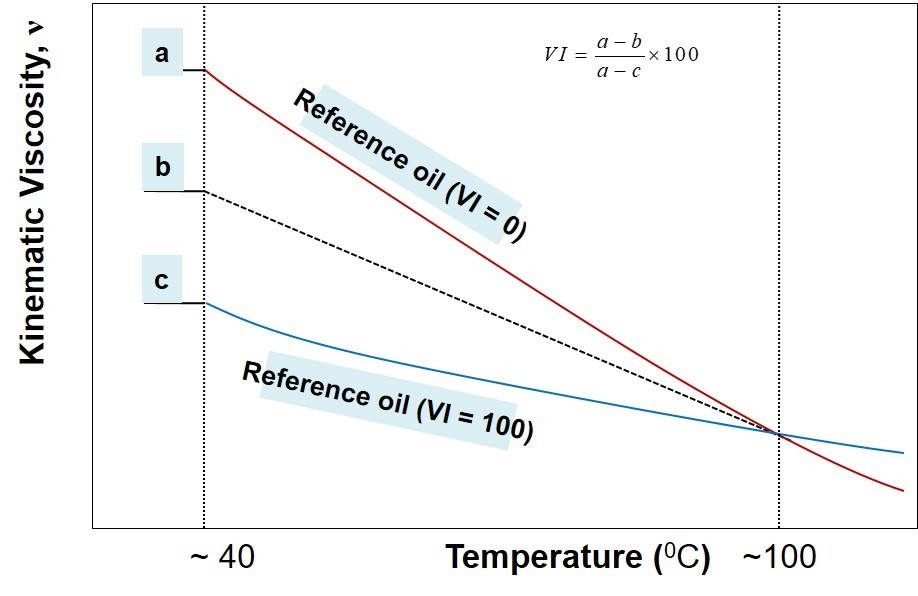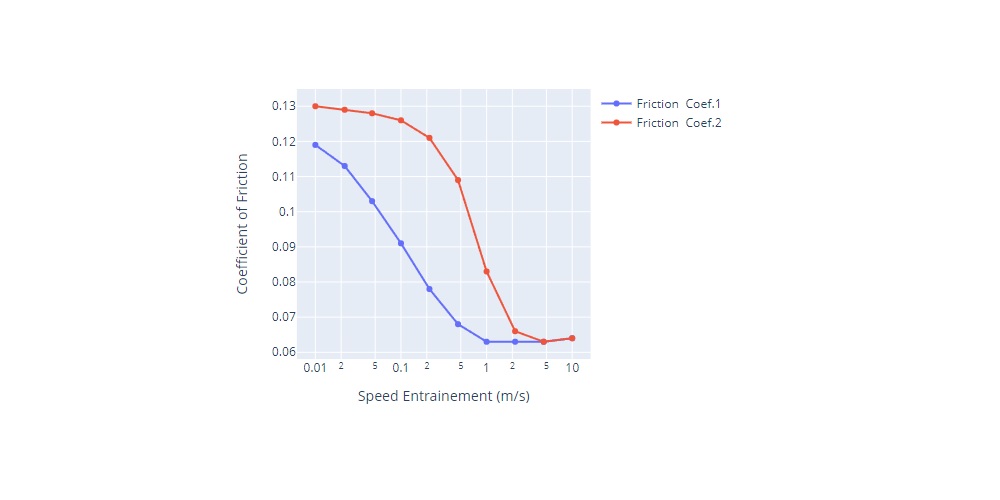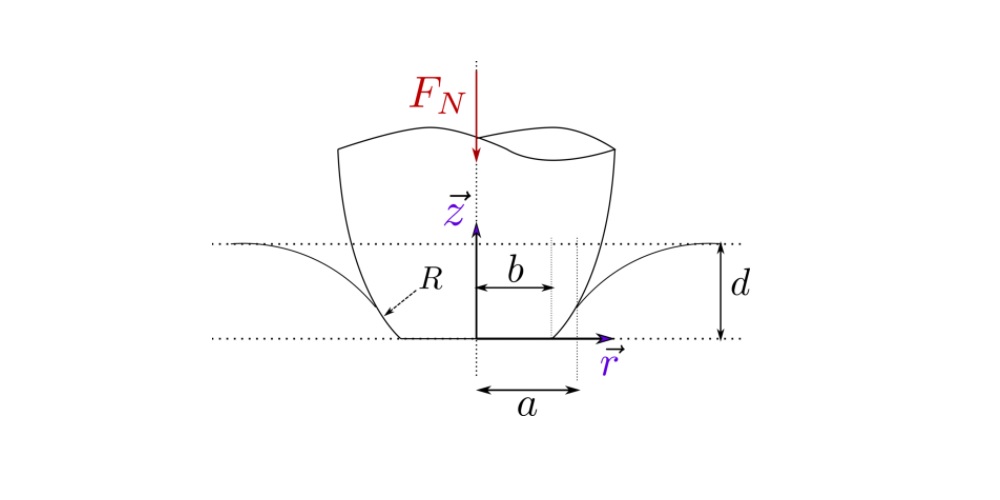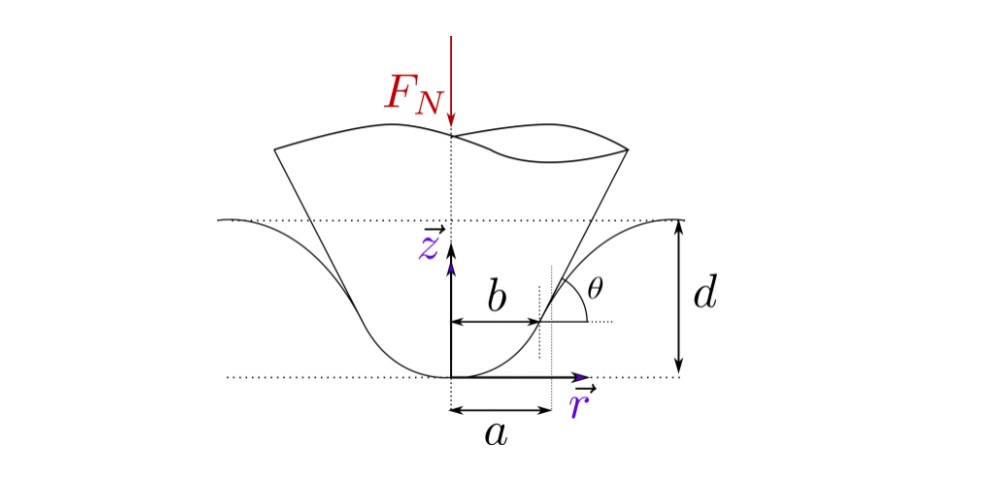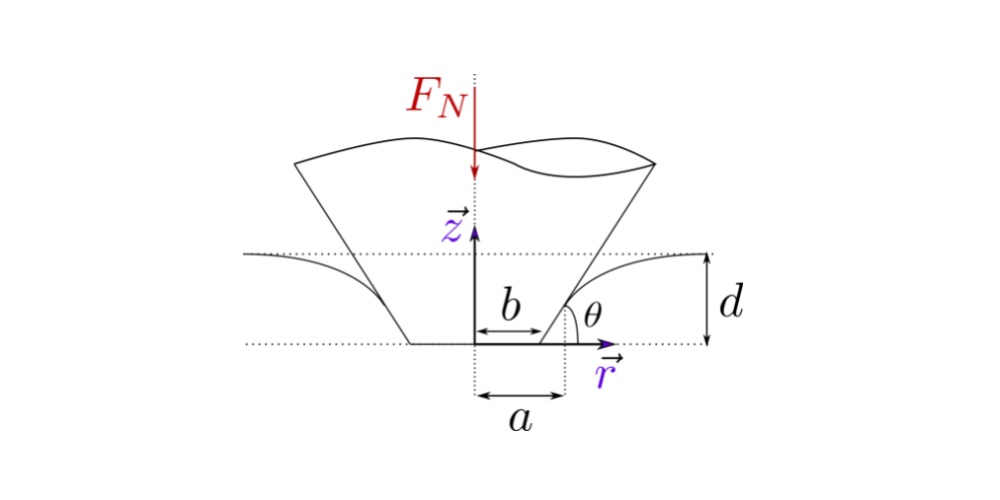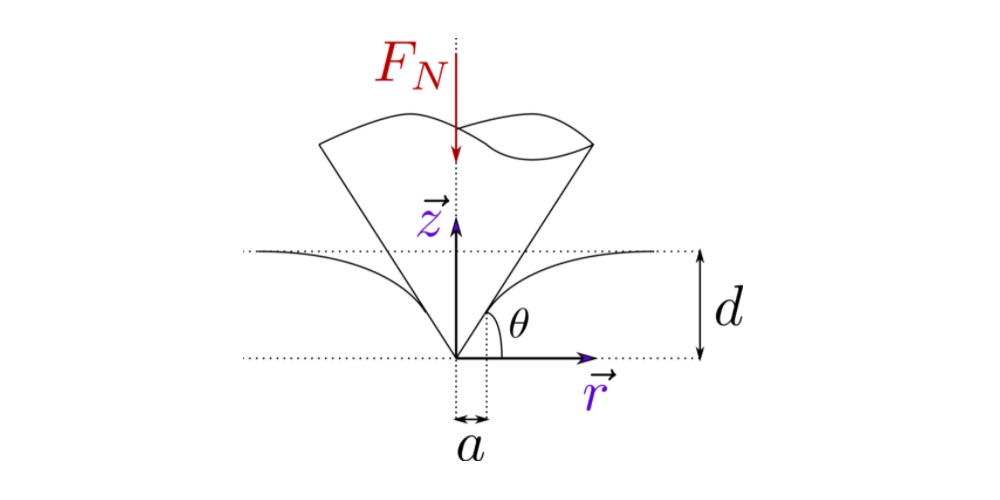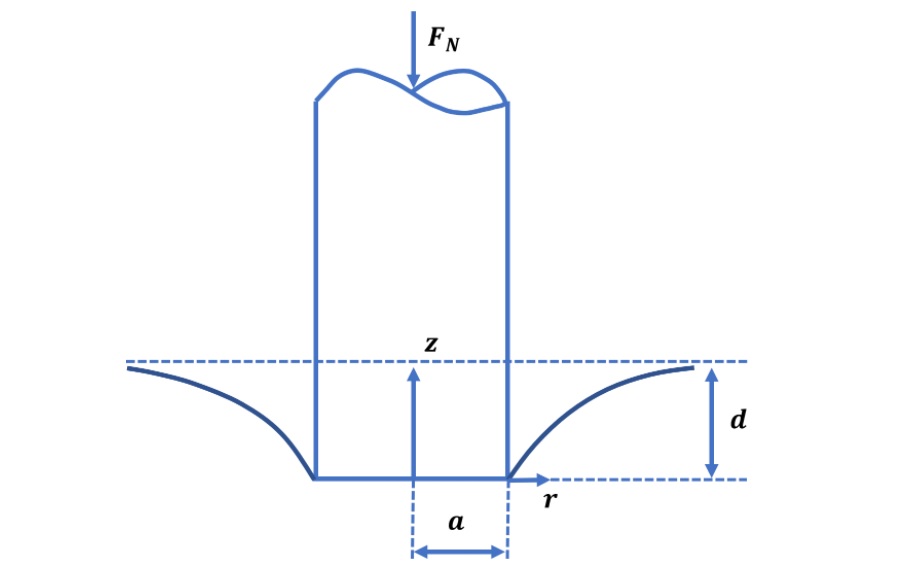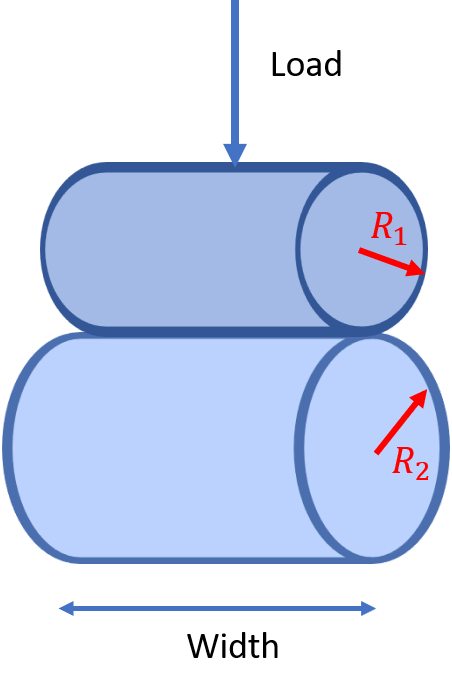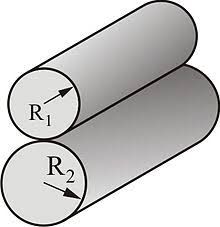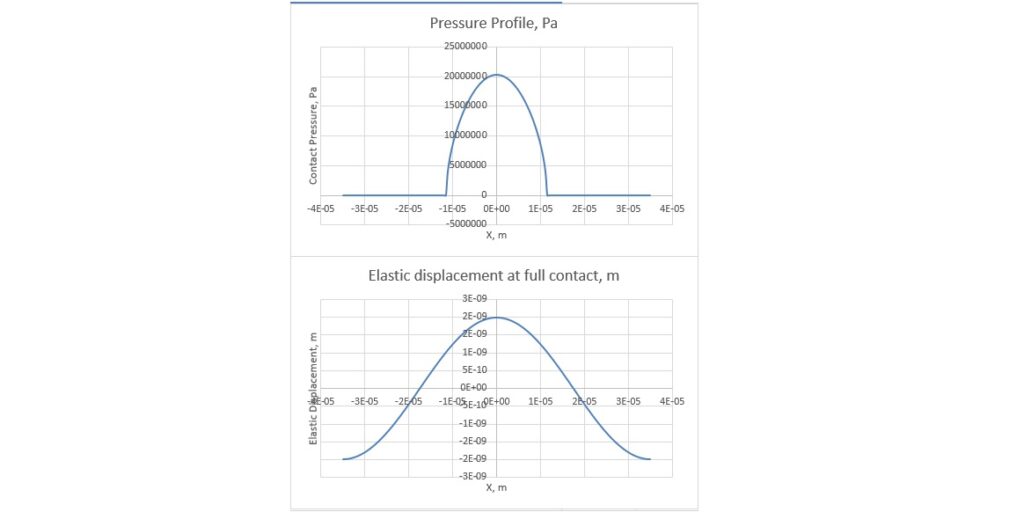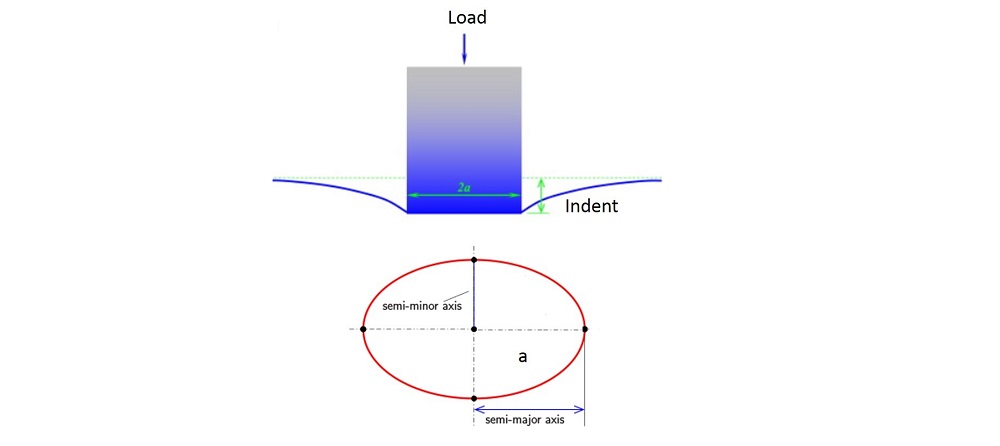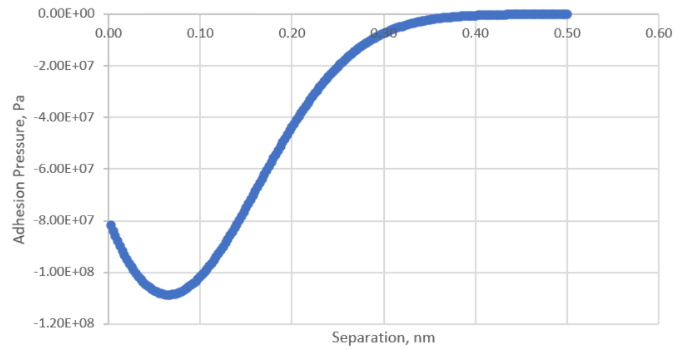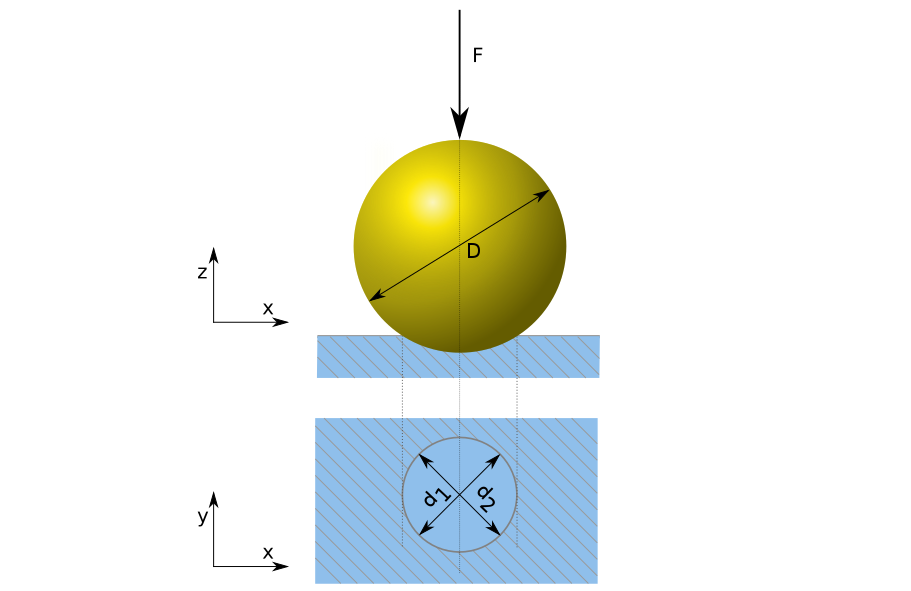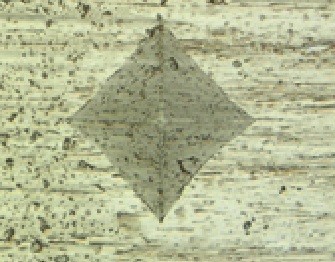Administration of the project
EHL Film Thickness Calculator (Central and Minimum): Elliptical (Point) Contact
An EHL Film Thickness Calculator allows calculating central and minimum film thicknesses in a full film lubricated elliptical (point) contact as a function of entrainment speed. The central and minimum film thicknesses are calculated using equations developed by Hamrock & Dowson [1], Chittenden et al [2] and Nijenbanning & Moes [3,4]. The equations used in the calculator are given below the calculator along with the definitions and references. The calculator allows choosing one of the three equations in the calculations.

Central film thickness formulas
Hamrock & Dowson formula [1]
Hamrock & Dowson equation was derived assuming that the direction ![]() is the direction of entraining velocity and
is the direction of entraining velocity and ![]() is parallel to the minor contact axis of the contact ellipse (See Figure 1). Dimensionless central film thickness is given by the following equation:
is parallel to the minor contact axis of the contact ellipse (See Figure 1). Dimensionless central film thickness is given by the following equation:
(1) 
Parameters are as follows (definition of variables can be found at the end of the article):
(2) 
Chittenden et al formula [2]
In a standard situation where the entraining speed direction coincide with ![]() and is parallel to the minor axis of the contact ellipse (see Figure 1), the central film thickness according to Chittenden et al is as follows:
and is parallel to the minor axis of the contact ellipse (see Figure 1), the central film thickness according to Chittenden et al is as follows:
(3) 
Where
(4) 
Note, that Chittenden et al also describes the case when the entraining speed is parallel to the major axis of the contact ellipse (see Figure 2). In this case, equations change as follows:
(5) 
Where
(6) 
It should be however noted that in practice the entraining speed is parallel to the minor axis of the contact ellipse and all other film thickness fits assumes the standard situation. Thus in the calculator only this standard case is considered.
Nijenbanning & Moes formula [3,4]
(7) 
such that:[3]
(8) 
and
(9) 
Its important to note here that ![]() is defined as a sum velocity:
is defined as a sum velocity: ![]() (as opposed to the definition of Chittenden et al and Hamrock and Dowson, where it is defined as mean entraining velocity)
(as opposed to the definition of Chittenden et al and Hamrock and Dowson, where it is defined as mean entraining velocity)
Minimum film thickness formulas
Hamrock & Dowson et al formula [1]
Entrainment direction is perpendicular to the major axis of the contact ellipse (see Figure 1, the speed direction is perpendicular to ![]() ). In practice, this is the most commonly encountered case (e.g., this is the case in bearings). Here, the direction
). In practice, this is the most commonly encountered case (e.g., this is the case in bearings). Here, the direction ![]() is the direction of entraining velocity and
is the direction of entraining velocity and ![]() is parallel to the minor contact axis of the contact ellipse (see Figure 1, axis
is parallel to the minor contact axis of the contact ellipse (see Figure 1, axis ![]() ).
).
(10) 
Here the parameters are as follows:
(11) 
Chittenden et al formula [2]
In a standard situation where the entraining speed direction coincide with ![]() and is parallel to the minor axis of the contact ellipse (see Figure 1), the minimum film thickness according to Chittenden et al is as follows:
and is parallel to the minor axis of the contact ellipse (see Figure 1), the minimum film thickness according to Chittenden et al is as follows:
(12) 
(13) 
Note, that Chittenden et al also describes the case when the entraining speed is parallel to the major axis of the contact ellipse (see Figure 2). In this case, equations change as follows:
(14) 
Here the parameters are as follows:
(15) 
Nijenbanning & Moes formula [3]
(16) ![Rendered by QuickLaTeX.com \begin{equation*} H_{min} = \left(\left[(1.7M^{-1/9}L^{3/4}t)^{r} + (1.96M^{-1/9})^{r}\right]^{s/r} + (47.3M^{-2})^{s})\right)^{t / s} \end{equation*}](https://quicklatex.com/cache3/29/ql_586d25a7b0fededde423bdd4346ada29_l3.png)
such that:
(17) 
Its important to note here that ![]() is defined as a sum velocity:
is defined as a sum velocity: ![]() (as opposed to the definition of Chittenden et al, where it is defined as mean entraining velocity)
(as opposed to the definition of Chittenden et al, where it is defined as mean entraining velocity)

Definitions:
Poisson’s ratio ![]() dimensionless,
dimensionless,
Young’s modulus of elasticity ![]() , [Pa],
, [Pa],
Equivalent elastic constant  , [Pa],
, [Pa],
Base oil viscosity (dynamic) ![]() , [Pa
, [Pa ![]() ],
],
Pressure-viscosity coefficient ![]() , [
, [![]() ],
],
Mean entraining velocity ![]() , [
, [![]() ] in the equations by Chittenden et al and Hamrock & Dowson. For Nijenbanning & Moes equations, the sum velocity is used:
] in the equations by Chittenden et al and Hamrock & Dowson. For Nijenbanning & Moes equations, the sum velocity is used: ![]() , [
, [![]() ]
]
Equivalent radii of curvature in (X,Y) directions (ellipse) ![]() , [
, [![]() ]
]
Effective radius ![]() in the direction of lubricant entrainment, [
in the direction of lubricant entrainment, [![]() ]
]
Normal applied load ![]() , [N]
, [N]
Material parameter [1], ![]() , dimensionless
, dimensionless
Speed parameter [1], ![]() , dimensionless
, dimensionless
Load parameter [1], ![]() , dimensionless
, dimensionless
Modified load parameter [3], ![]() , dimensionless
, dimensionless
Viscosity parameter [3], ![]() , dimensionless
, dimensionless
Ellipticity parameter [1], ![]() , dimensionless. Here
, dimensionless. Here ![]()
References:
[1] B. J. Hamrock and D. Dowson. Isothermal elastohydrodynamic lubrication of point contacts. NASA Technical Note, 3(D-8317), October 1976.
[2] J. F. D. R. J. Chittenden, Duncan Dowson and C. M. Taylor. A theoretical analysis of the isothermal elastohydrodynamic lubrication of concentrated contacts. I. direction of lubricant entrainment coincident with the major axis of the Hertzian contact ellipse. Proceedings of the Royal Society of London. A. Mathematical and Physical Sciences, 397(1813):245 – 269, Feb. 1985.
[3] H. Moes. Lubrication and beyond, University of Twente lecture notes, 2000.
[4] G. Nijenbanning, C. Venner, and H. Moes. Film thickness in elastohydrodynamically lubricated elliptic contacts. Wear, 176:217-229, January 1994.
